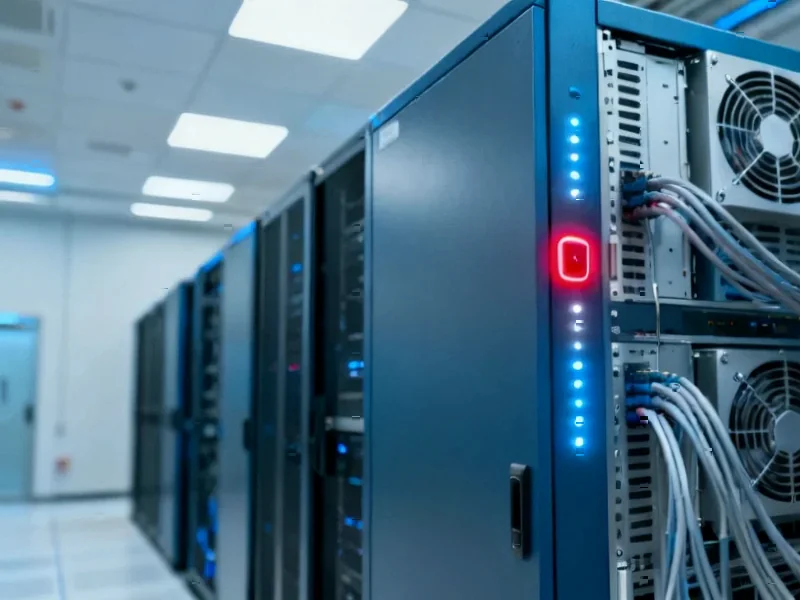According to Financial Times News, OpenAI has signed a $38 billion, seven-year computing deal with Amazon Web Services, marking the latest in a series of massive infrastructure commitments that total nearly $1.5 trillion. The agreement allows immediate use of AWS infrastructure for running products including ChatGPT, while reducing OpenAI’s dependence on Microsoft for computing power. CEO Sam Altman aims to add 1 gigawatt of new capacity weekly by 2030, equivalent to a nuclear power plant’s output, despite the company reporting a $12 billion loss last quarter alone. The deal follows OpenAI’s recent restructuring that removed Microsoft’s right of first refusal on cloud contracts, clearing the path for the AWS partnership while the company anticipates reaching $100 billion in revenue by 2027.
The Technical Architecture Behind OpenAI’s Cloud Strategy
OpenAI’s AWS partnership represents a sophisticated multi-cloud architecture strategy that goes beyond simple redundancy. The technical implementation likely involves distributing different AI workloads across cloud providers based on specialized hardware availability, geographic latency requirements, and cost optimization. Microsoft Azure has been OpenAI’s primary infrastructure partner with custom-built supercomputers specifically designed for large language model training, while AWS brings different strengths including their Trainium and Inferentia chips optimized for cost-effective inference at scale.
The $38 billion commitment suggests OpenAI is planning for exponential growth in both training and inference workloads. Training next-generation models requires massive clusters of interconnected GPUs with high-bandwidth networking, while serving models to hundreds of millions of users demands global distribution and sophisticated load balancing. This multi-cloud approach allows OpenAI to leverage AWS’s global edge locations for low-latency inference while maintaining specialized training infrastructure on Azure, creating a hybrid architecture that optimizes for both performance and cost.
The Staggering Power Requirements of Advanced AI
Sam Altman’s goal of adding 1 gigawatt per week by 2030 represents one of the most ambitious infrastructure buildouts in technology history. To put this in perspective, a single gigawatt can power approximately 750,000 homes, meaning OpenAI is planning to consume the equivalent of a nuclear power plant’s output every week within six years. This scale highlights the fundamental physics challenge facing AI advancement: each order-of-magnitude improvement in model capability requires exponentially more computational resources and energy.
The technical implications extend beyond simple power consumption. AI data centers require specialized cooling systems, redundant power distribution, and sophisticated thermal management that traditional cloud infrastructure doesn’t need. High-density GPU racks can consume 40-50 kilowatts per rack compared to 10-15 kilowatts for conventional servers, demanding liquid cooling solutions and advanced power delivery systems. This explains why OpenAI is making long-term commitments now – building this infrastructure requires years of planning and construction.
The Financial Engineering Behind Trillion-Dollar Commitments
While the $1.5 trillion total commitment sounds astronomical, the payment structure reveals sophisticated financial engineering. These are not upfront payments but rather commitments to spend incrementally as capacity becomes available, similar to how cloud providers typically structure enterprise agreements. This approach allows OpenAI to secure access to future computing capacity without immediate cash outlays, essentially reserving their place in the queue for next-generation AI chips and infrastructure.
The timing coincides with OpenAI’s corporate restructuring that created a more conventional for-profit entity, making it easier to raise capital against these future revenue streams. By converting from their unique capped-profit structure, OpenAI can now use traditional debt financing and equity raises to fund infrastructure investments. This financial engineering is crucial because even with projected $100 billion revenue by 2027, the company would need to allocate nearly 40% of its revenue just to cover these computing commitments.
Strategic Implications for the AI Ecosystem
OpenAI’s cloud diversification strategy represents a fundamental shift in how AI companies approach infrastructure. Rather than being locked into a single provider, they’re creating a competitive marketplace for their computing needs, which could drive down costs and accelerate innovation across the cloud industry. This approach also mitigates the risk of any single provider experiencing outages or capacity constraints that could disrupt OpenAI’s services.
The technical implementation likely involves developing abstraction layers that allow workloads to move seamlessly between cloud providers based on availability, cost, and performance requirements. This requires sophisticated orchestration software and standardized containerization that can run across different hardware architectures. As AI workloads become increasingly heterogeneous – from training massive foundation models to running specialized inference applications – this multi-cloud approach provides the flexibility needed to optimize for different use cases.
The Sustainability Challenge of AI Scale
The most significant technical challenge beyond the pure computing scale is sustainability. At 1 gigawatt per week, OpenAI would be consuming approximately 52 gigawatts annually by 2030 – more than the total electricity consumption of many developed countries. This raises fundamental questions about where this power will come from and how it can be sourced sustainably.
OpenAI and its cloud partners will need to develop innovative approaches to energy management, including locating data centers near renewable energy sources, implementing advanced cooling technologies, and potentially developing direct partnerships with energy providers. The company may also need to invest in nuclear or other clean energy projects specifically to power their AI infrastructure, creating a vertically integrated energy-to-computation supply chain that doesn’t currently exist at this scale.




